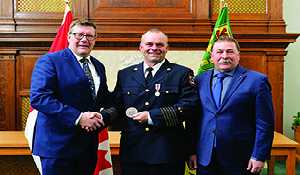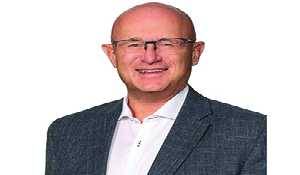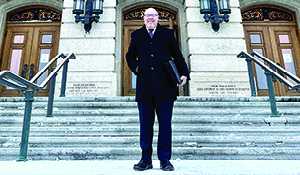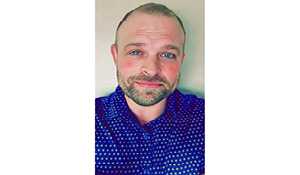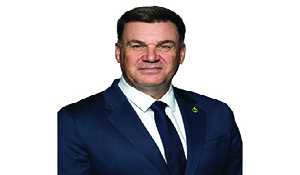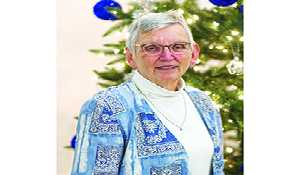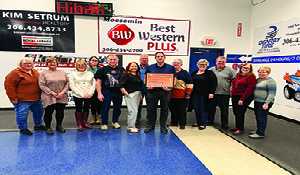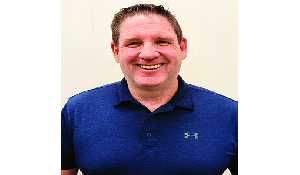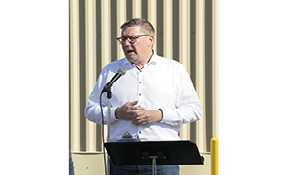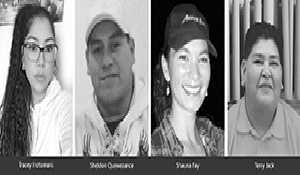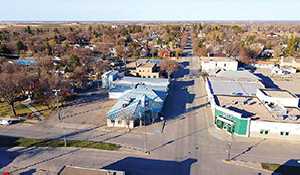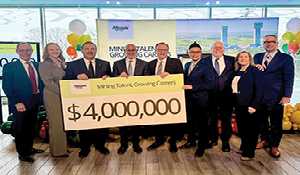Moosomin Chamber of Commerce: More expansion on horizon for Seed Hawk
March 18, 2014, 3:04 am
Khang Nguyen


Langbank based air-seeder manufacturer Seed Hawk is in the process of drastically expanding in size, says President and CEO Peter Clarke when he presented at the Chamber meeting last Tuesday.
For 20 years, Seed Hawk has been manufacturing zero-till seeders used by farmers across the world. In October of last year, Swedish implement manufacturer Väderstad purchased Seed Hawk with plans to expand the production and facilities.
Since 2006, Väderstad had been a partner with Seed Hawk, owning 49 per cent of the Saskatchewan company at the time. Since 2008, Seed Hawk has grown by 700 per cent, says Clarke.
“We hit the $20 million mark around 2008. We continue to grow our sales in multiple markets whether that’s overseas, the US, or our domestic markets. We’ll hit $80 million dollars in sales this year with a projection to be around $120 million in 2016 and close to $200 million in 2018.”
“What this provided Väderstad with was access to design technology for larger frames, and what it provided Seed Hawk with was access to the Eastern and Western European markets. Based in Saskatchewan it was very difficult to reach across the ocean and establish distributor relationship with dealers in countries we were very unfamiliar with. This partnership allowed us to open up that market very quickly.” Clarke said.
Seed Hawk and Väderstad share dealerships in over 40 countries around the world with 50 dealerships in North America. Seed Hawk is currently in the process of expanding the factory in Langbank.
“We think big because we care to. We care about zero-till, we care about sustainable farming practices and we care about it around the world.”
Clarke says that 10 years ago, the entire operation took place within a couple of factory buildings on the quarter section of property just north of Langbank.
The entire property is now covered with factory buildings as the company is expanding. The company will be expanding its plant with additions to the south.
“We knew that once growers adopted the technology related to zero-till, and as need for that grew both in Western Canada and the rest of the world, we needed to expand. We’re in our fifth stage of expansion and we expect to see expansion every year for the next four to five years.”
“We project that through lean and the management of our practices with being efficient and more productive, we can increase our throughput and our output for our plant by 50 per cent on the current footprint, which is huge, but necessary for us to be more productive than we are today.”
With the substantial growth, the company is in the process of growing its work force. In 2011, the company had 125 employees. That number has grown to 250 employees over two years.
“I remember when I arrived at Seed Hawk we had 125 employees and I thought, ‘How are we going to grow that much? Where the heck are we going to find even 100 more people to work here? There’s just not enough draw in the population around us.”
“Our plan is to grow that to 400 employees by 2016. We have this continual thirst for additional people to come to our organization and that covers the entire gambit of skill sets. Our technical talent, we have over 30 engineers and designers in our facility at Langbank with the expectation to grow that further as we move forward. We have, with the last expansion, a very big focus on manufacturing. We want to be a centre of excellence in the province, and we need to be if we’re going to continue growing at this pace without always needing to add floor space to get done what we need to get done.”
Clarke touched upon the difficulties the growing company has faced in this area of Saskatchewan.
“We struggle a lot with getting people here and finding places for them to live. That’s our biggest hurdle today. We try to encourage our partners within the communities to look forward to building that with us.” Clark says.
“What we struggle with is the remoteness of a business, where we are. We’re a growing organization and employer of 250 strong from about a 125 employees less than three years ago. We’re growing rapidly and we’ll continue to grow, but we struggle with both attracting and maintaining employees in a rural setting. It’s a struggle for us as an organization at pretty much a hyper-growth, to continue the pace of employing people.”
Currently, Clarke says that less than 50 per cent of the employees have come from rural communities around Seed Hawk.
“A lot of our employees come from outside the geography of about 100 kilometres. They come from the province,but they also come from Western Canada, and a large contingent of our work force continues to come from Eastern Canada.”
Clarke says that he has been working on creating a relationship between Seed Hawk and surrounding communities to bring more people to the area who may be looking for exactly what the communities have to offer.
“It’s interesting that there are a lot of people across this country looking for a different lifestyle than the one that exists with them today. Moving to a rural setting, working in and around the community where the work-life balance is a lot better than it maybe does in an urban centre can be attractive to the right people. Those are the people we go after. Those are the partnerships we want to build with the communities around us.”
“We see a very bright future for ourselves in the community in which we work and live. Seed Hawk is playing a big role in making that happen. I think it’s good to talk to any of the Chambers of Commerce that are around that 100 kilometre radius . . . it’s not just 400 people, it’s 400 families who will be coming to this part of the province, and finding sustainable work. We have a good work environment, we pay well, we provide well for our employees.”
“As an employer of choice and probably ultimately the largest employer within the 100 kilometres of Moosomin, It’s important for us to engage in these partnerships with Chambers of Commerce and the administration within each of those communities to understand where we’re going.”
